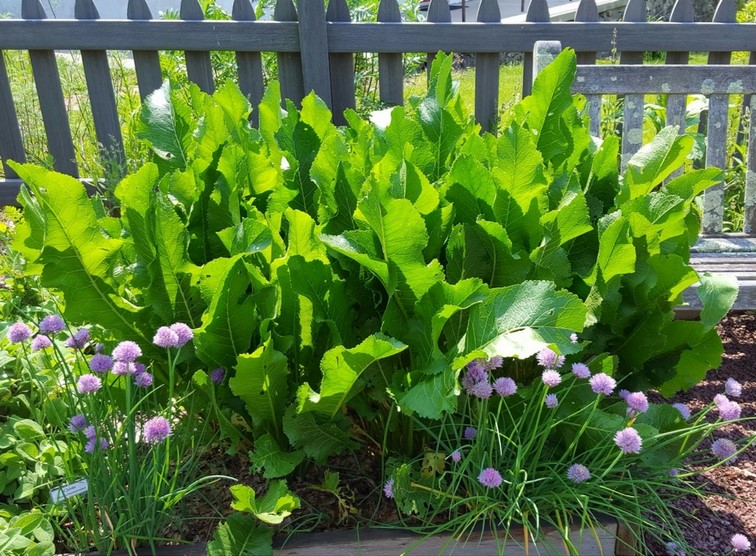Horseradish (Armoracia rusticana), grown for its fleshy root, is native to Eastern Europe. It’s a member of the Brassicae family which includes broccoli, cabbage and mustard. It has been used since ancient times, appearing in Greek and Roman writings. During the Middle Ages both the root and the leaves were used medicinally. Horseradish was brought to the New World by European colonists. Both George Washington and Thomas Jefferson grew it on their plantations.
Horseradish is a perennial plant that is hardy in zones 2 through 9 but does best in areas with winter temperatures that are cold enough to send the plants into dormancy, generally zones 4 through 7. The plants prefer full sun but will tolerate some shade. Horseradish is not picky about soil except if it is constantly wet. It doesn’t like soggy soil. The foliage grows to 3 to 4 feet tall. White flowers appear in the late spring. These should be removed so that the plant does not waste energy producing seeds.
Horseradish can be grown from plants or roots. Seed is not available. Plants or roots can be planted in the spring or the fall. Most gardeners grow their horseradish from purchased roots. The roots are easy to plant. Dig a hole approximately 12 inches deep. Place the root in the hole on a diagonal, making sure that the top, or flat end, of the root is at least 2 inches below soil level.
After the plants reach 8 inches in height, remove any suckers to ensure a thicker, straighter root.
Water your plants at least once a week during dry spells in the summer. A thick layer of mulch will help conserve moisture in the soil.
Harvesting the roots is easy. After the first frost has killed the foliage, use a garden fork to loosen the soil on either side of your plant. Gently pry up the root. The main root will be surrounded by side roots. Replant the side roots for harvesting next year.
Wash the main root well and store in a perforated plastic bag in your refrigerator. Fresh horseradish will keep for 3 to 4 weeks in the refrigerator.
The fresh roots have very little taste. When crushed in a blender or grated, stored enzymes in the root are released that give it its heat. These enzymes can irritate the membranes in the nose and eyes similar to the effect of onions. This is the reason that horseradish was traditionally used to clear stuffy noses and sinuses.
Freshly grated horseradish should be used immediately. It loses its taste over time, eventually becoming bitter. If you aren’t going to use it immediately, you can store it in vinegar. You can control how hot your horseradish is by how long you wait to add the vinegar. Add it immediately if you want it milder. For more heat, wait 3 minutes to add the vinegar. This gives the enzymes more time to react. Adding the vinegar stops the reaction. Use 2 to 3 tablespoons of vinegar and ½ teaspoon of salt for each cup of grated or crushed horseradish. Store the mixture in a tightly sealed glass jar. It will keep in the refrigerator for 4 to 6 weeks.

